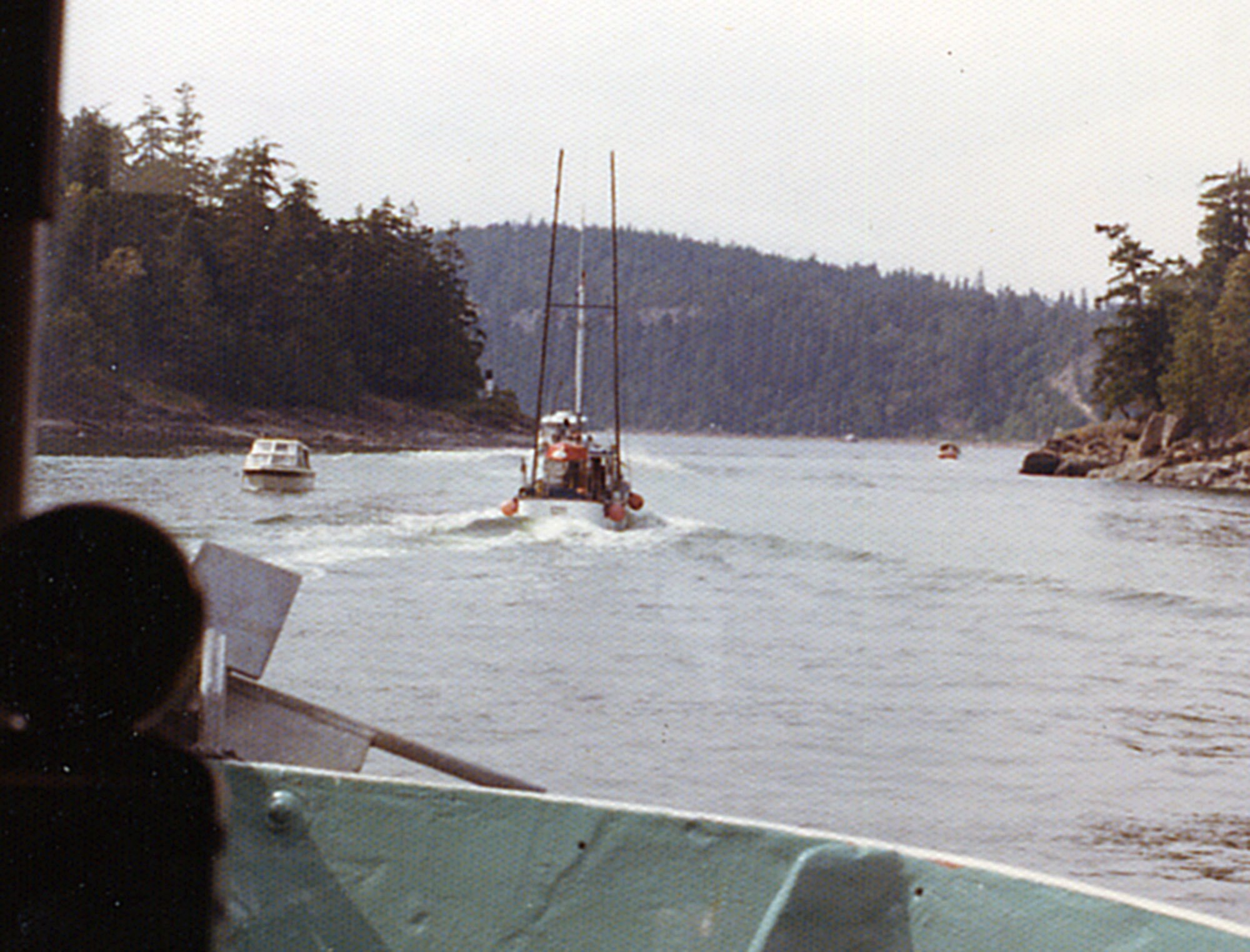Following the Tides
Front and center in our pilothouse are the tide tables giving us the times of high and low tide at spots along the Northwest coast. And the critical current tables, as the moon, in its passage, pulls innumerable cubic miles of water with it, creating dangerous currents in narrow passages.
And so in the thin light of 4:30, we slide alone through The Locks, and down into the still waters of a Puget Sound summer morning. Far above us, the moon swings a little further to the west, drawing water north out the sound and towards the distant ocean, speeding northbound mariners like us.
For me it is a magic moment: riding the tide north, the day getting lighter as Mary Lou and engineer Eric head back to bed. All around us the Puget Sound cities, the vast Boeing wide body plant at Everett, the commuter ferries, are waking up, the high Puget Sound volcanoes, Baker in the north and Rainier in the south, pink as the sun lights up the snowfields.
The current boosts our speed, spits us out of Puget Sound and into the Straits of Juan de Fuca, where we catch the tide’s turn, let the now northerly flowing current speed us through Cattle Pass, the southern entrance to the San Juan Islands. They march by, dotted with summer homes, as are the Canadian Gulf Islands, and in mid-afternoon, those summer playgrounds are behind us and the last of the flooding current pushes us through the whirlpools at 200’ wide Dodd Narrows and out into the inland sea of Georgia Strait, British Columbia.
In our little slow boats of seasons past, our day’s run would end somewhere along here. But the Emily Jane is bigger, faster, the cannery in Petersburg Alaska, waiting for our load of freight. Plus the June days are long, light until after 10, so we push on, across the Strait, past the entrance to Jarvis Inlet, the first of the long, deep and winding inlets that penetrate British Columbia deep into the mountains. And finally, as the light is fading, anchor down in Redonda Bay, where pilings on the beach and an old boiler in the bushes are all that is left of the old Francis Millerd salmon cannery.
The night comes still, but from the north there is the faint sound of the rush of the tidal rapids in what I call The Gauntlet; blocking every passage that leads north: Yuculta, Seymour, and Hole-In-The-Wall. Where even migrating humpback and orca whales, wait for slack water before swimming through.
And something else from the south, very faint, only audible when the tides cease at slack water: the hum of the big lumber and paper mills at Powell and Campbell RIvers, Nanaimo, and Port Alberni. For it is here, in Desolation Sound, I’ve always felt, that the busy populated South Coast ends and the vast wilderness that is The North begins.
Photo: Dodd Narrows, British Columbia. Here, like in numerous places along the Inside Passage, the passage is so narrow that safe transit is only at slack water, the top or bottom of the tide, occurring every six hours.

